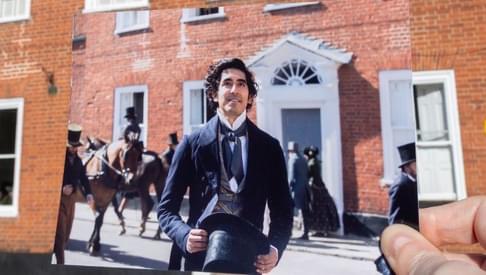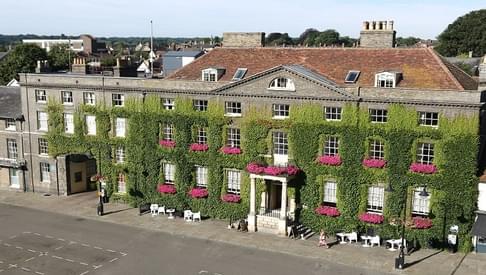
Back to Blogs
Discover
Dickens' Love Affair with Bury St Edmunds
We take a look at Dickens many visits to Bury St Edmunds and his love for the town which he immortalised in his novel The Pickwick Papers.
"Last night I read Copperfield at Bury St Edmunds to a very fine audience,”
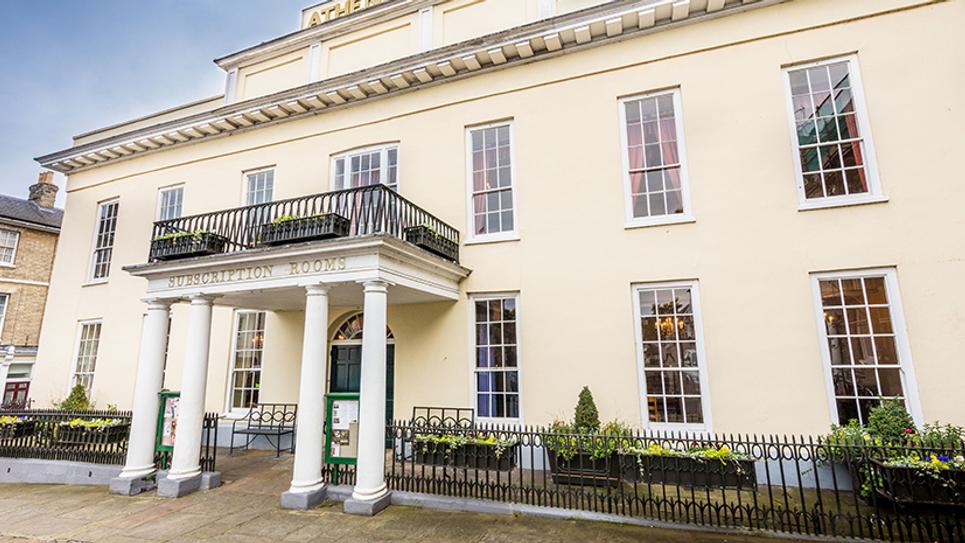
The Athenaeum where Charles Dickens gave readings of his famous works while in Bury St Edmunds
Charles John Huffam Dickens was born on 7 February 1812 in Landport, Hampshire, England, and left school to work in a factory when his father was incarcerated in a debtors' prison.
Despite his lack of formal education, he edited a weekly journal for 20 years, wrote 15 novels, five novellas, hundreds of short stories and non-fiction articles, lectured and performed readings extensively, was an indefatigable letter writer, and campaigned vigorously for children's rights, education, and other social reforms.
Dickens's literary success began with the 1836 serial publication of The Pickwick Papers. Within a few years he had become an international literary celebrity, famous for his humour, satire, and keen observation of character and society.
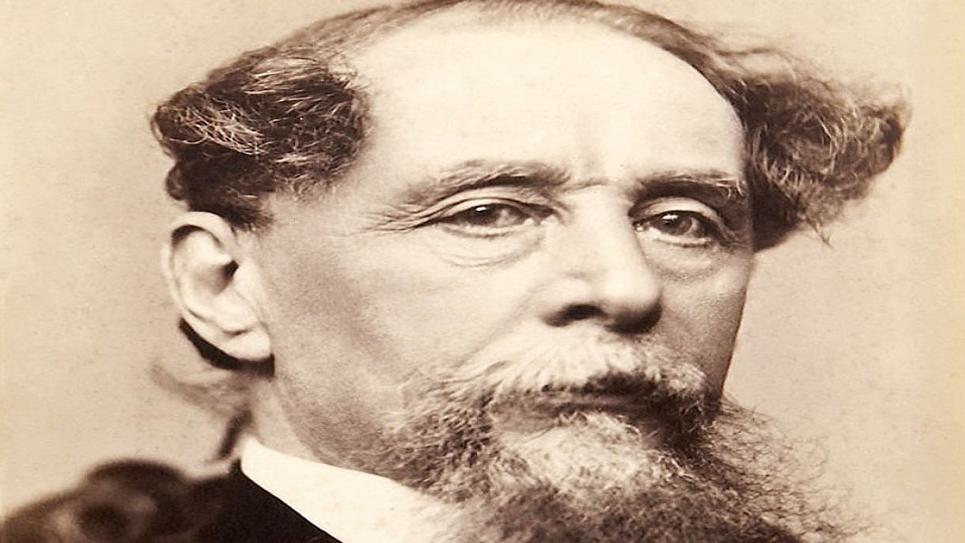
David Copperfield was Dickens' eighth novel and was first published as a serial in 1849–50, and as a book in 1850. The novel features the character David Copperfield, and is written in the first person, as a description of his life until middle age, with his own adventures and the web of friends and enemies he meets along his way. Copperfield finds career success as an author, and is a person of deep emotions.
Many elements of the novel follow events in Dickens's own life, and it is often considered his veiled autobiography. It was Dickens' favourite among his own novels. In the preface to the 1867 edition, Dickens wrote, "like many fond parents, I have in my heart of hearts a favourite child. And his name is David Copperfield."
From his letters to friends and family, we know Dickens was very fond of Bury St Edmunds (where he read his novels at The Athenaeum) and its inhabitants. "Last night I read Copperfield at Bury St Edmunds to a very fine audience,” he wrote. “I don’t think a word – not to say an idea – was lost.”
“Is this Bury St. Edmunds?”
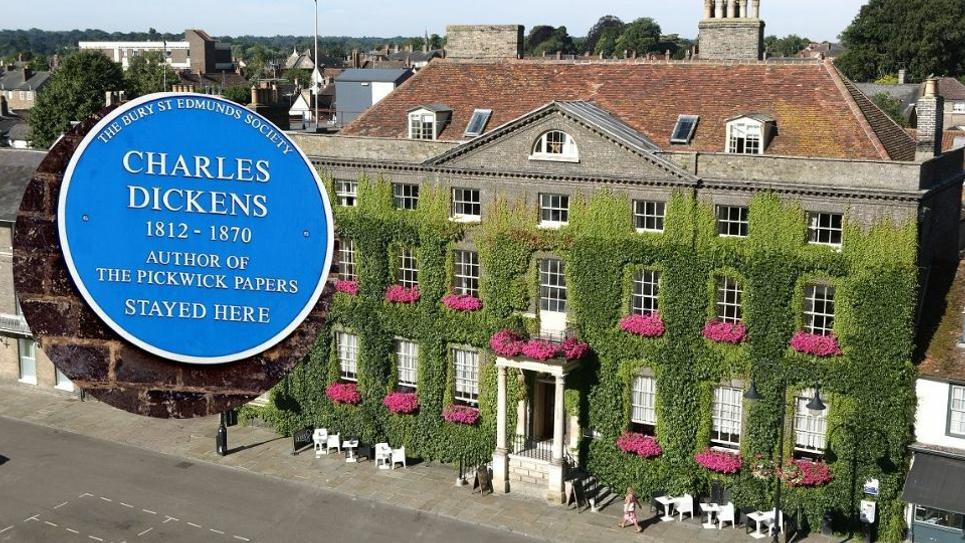
The blue plaque outside The Angel commemorates Dickens many stays at The Angel
You cannot miss the blue plaque at the front of The Angel Hotel, installed on the 200th anniversary of Charles Dickens’s birth to commemorate his visits to Bury St Edmunds.
Dickens, who created some of the world's best-known fictional characters and is regarded by many as the greatest novelist of the Victorian era, first stayed at The Angel in 1835 as a journalist for the Morning Chronicle (staying in what was then room 11).
In 1859 and 1861 he returned to The Angel to read to a captive audience at the nearby Athenaeum, staying in what is now room 215, now known as the Charles Dickens Suite (pictured below). He gave readings from The Pickwick Papers on 13 October 1859 and again on 30 October 1861 when he read from A Personal History of David Copperfield.
“And this,” said Mr. Pickwick, looking up, “is the Angel! We alight here, Sam.”
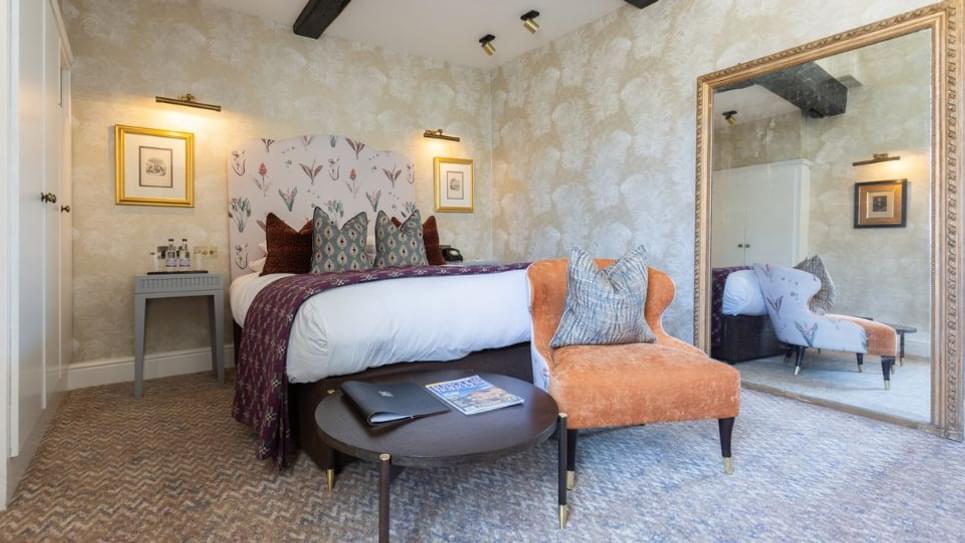
The Charles Dickens Suite Room 215 at The Angel Hotel in Bury St Edmunds
The Angel's ground floor refurbishment completed in April 2019, features some wonderful nods to Dickens including quotes from the author on mirrors, artwork and copies of his books in and among a new look which embraces the hotel's Georgian roots. Guests can also sample one of the new signature Dickens inspired cocktails in the bar area.
Bury St Edmunds and The Angel itself feature extensively in The Pickwick Papers. In Chapters 16 Mr Pickwick and his manservant Sam arrive at Bury St. Edmunds, on the trail of the charlatan Alfred Jingle:
"Beg your pardon, sir,' said Sam, suddenly breaking off in his loquacious discourse. “Is this Bury St. Edmunds?”
'It is,” replied Mr. Pickwick.
The coach rattled through the well paved streets of a handsome little town, of thriving and cleanly appearance, and stopped before a large inn situated in a wide open street, nearly facing the old abbey.
“And this,” said Mr. Pickwick, looking up, “is the Angel! We alight here, Sam.”
When Sam and Pickwick hear Jingle's plans to elope with a girl from a nearby boarding school, Pickwick hides in the school grounds as part of a plan to save her, causing panic among the teachers and boarders “all half-dressed and in a forest of curl-papers”. It is thought this school may have been based on a school open in the 1850s on 42 and 43 Southgate Street.
Bury St Edmunds is again mentioned in 'The Personal History of David Copperfield':
‘What is your part of the country now?’ I asked, seating myself near him.
‘I am established within a few miles of Bury St. Edmund’s, sir,’ said Mr. Chillip.
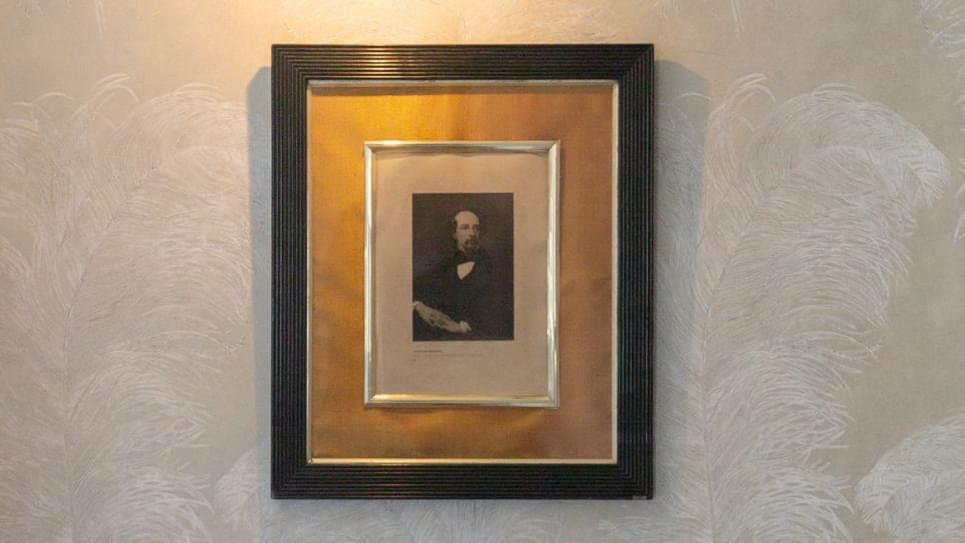
A photograph of Dickens hangs in the Charles Dickens Suite, Room 215
Theatre Royal Bury St Edmunds
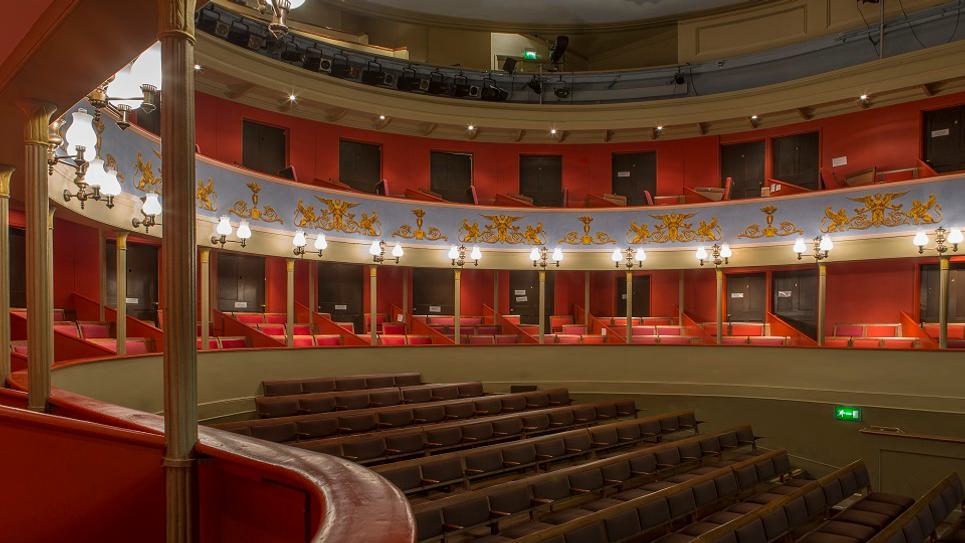
Theatre Royal Bury St Edmunds
There's another little known connection that Bury St Edmunds has to the famous author and his book Nicholas Nickleby.
T.D Davenport, lessee of Theatre Royal Bury St Edmunds from 1846 to 1848, and his daughter Jean Davenport are widely thought to have provided Dickens the real-life inspiration for the characters of Vincent Crummles, the manager of a touring stage company and his daughter Ninetta in his novel Nicholas Nickleby (1838).
Ninetta is billed as ‘the infant phenomena’, a child acting prodigy (despite the fact that she is, in reality, far older than her father admits), and in this there may indeed be some comparisons with Jean, who was performing mature lead characters from an early age.
Only 17 when she played Juliet at Theatre Royal Bury St Edmunds, she was already a veteran of the stage having made her first professional appearance at the age of 8. Having already toured internationally, in 1849 she relocated to America, where, she continued to act, but life off-stage proved just as dramatic – during the civil war she supervised the training of nurses and in 1861 played a part in foiling a plot to assassinate president Lincoln.
Filming The Personal History of David Copperfield in Bury St Edmunds

The Angel Hotel during filming. Photo: Rebecca Austin
Legendary actor Bob Hoskins, who was born in Bury St Edmunds, even played Wilkins Micawber in the 1999 BBC adaptation of David Copperfield!
Scenes in ‘The Personal History of David Copperfield’ based on Dickens' novel, directed by Armando Iannucci and starring Dev Patel, were shot in Bury St Edmunds in July 2018 and was released in 2019 - 185 years after Dickens first stayed in Bury St Edmunds.
The film locations included Angel Hill in front of The Angel Hotel where Dickens stayed, Crown Street, Charter Square, and inside the Theatre Royal Bury St Edmunds. Former Chairman of the Bury St Edmunds Tour Guides Mike Dean even appears in the film as an extra!
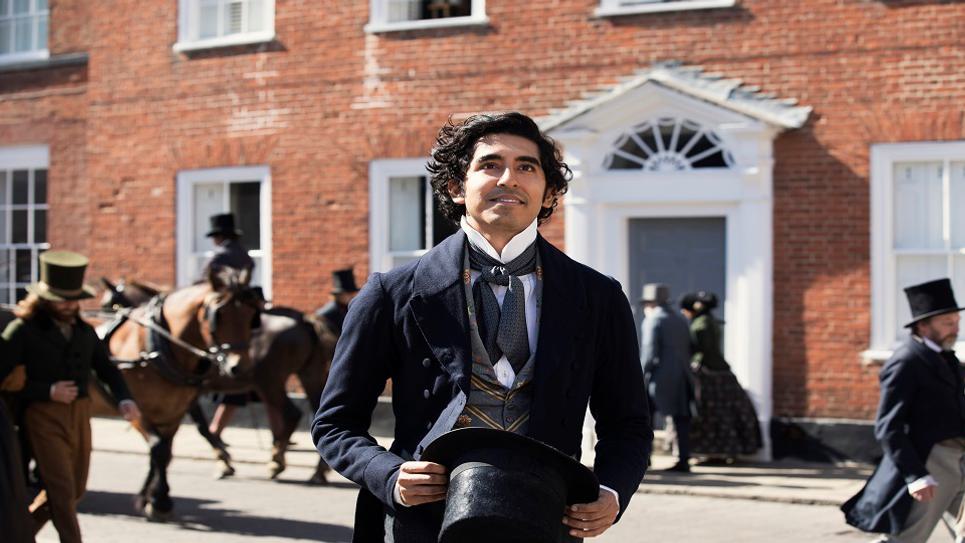
Dev Patel pictured in Chequer Square Bury St Edmunds for one of the scenes in the movie The Personal History of David Copperfield
Producer Kevin Loader said that originally they hadn't thought of using Suffolk as a location but were visiting locations where David Copperfield was set or Dickens had visited. “But, when we saw Angel Hill and The Athenaeum we knew we just had to use it. Also, I have never seen a more impressive coaching inn than The Angel Hotel, it’s huge and it looks just perfect for what we need.”
Loader said that the discovery of a period theatre in Bury St Edmunds Theatre Royal clinched the deal. During filming he said: “Today, we are filming the young David Copperfield’s arrival in London with all the carriages and horses moving about on Angel Hill. Then, at the end of the week, we are spending two days shooting at The Theatre Royal shooting two sequences which will bookend the movie.
“David Copperfield is a very biographical novel, so David is a writer and in one scene he goes to the theatre with some rather raucous friends and in a scene towards the end of the film he is reading extracts from his novels from the stage, on one of his reading tours.”
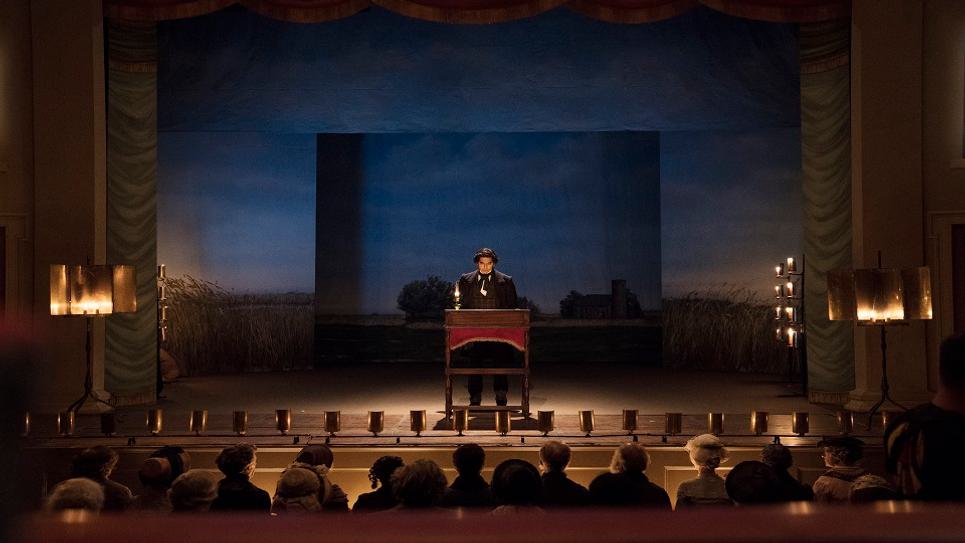
Dev Patel on stage at Theatre Royal Bury St Edmunds during filming of The Personal History of David Copperfield. Photo: Dean Rogers, courtesy of Lionsgate UK
Director Armando Iannucci told BBC Look East: “Bury St Edmunds gave us a big sort of open square and a coaching inn that we made into central London and the theatre there is a genuine 1830s theatre do that was great because the film opens with the old David Copperfield telling his story to an audience in a packed theatre and that was fantastic.
“It was great to see the crowds come out in Bury St Edmunds and in Kings Lynn where we recreated as much as we could what those places looked like in the 1840s. It was great to see schools come out and watch as a bit of a history lesson for them to see their surroundings turn into a show and tell.”
Where to Find Little Nods to Dickens in Bury St Edmunds
Charles Dickens Bench
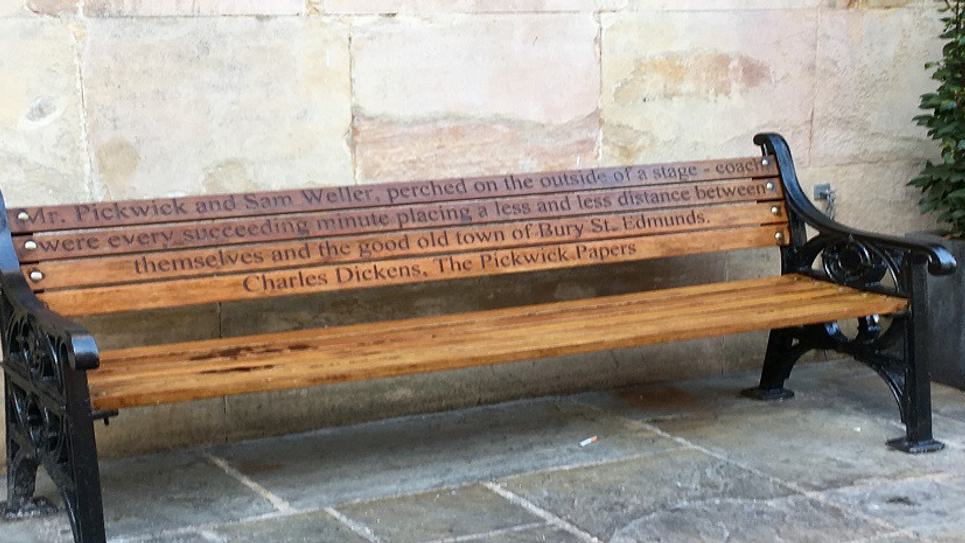
A quote from Dickens' The Pickwick Papers is carved into on a bench outside The Corn Exchange Wetherspoons at the top of Abbeygate Street.
"Mr. Pickwick and Sam Weller, perched on the outside of a stage-coach, were every succeeding minute placing a less and less distance between themselves and the good old town of Bury St. Edmunds".
Dickens signed Cheque
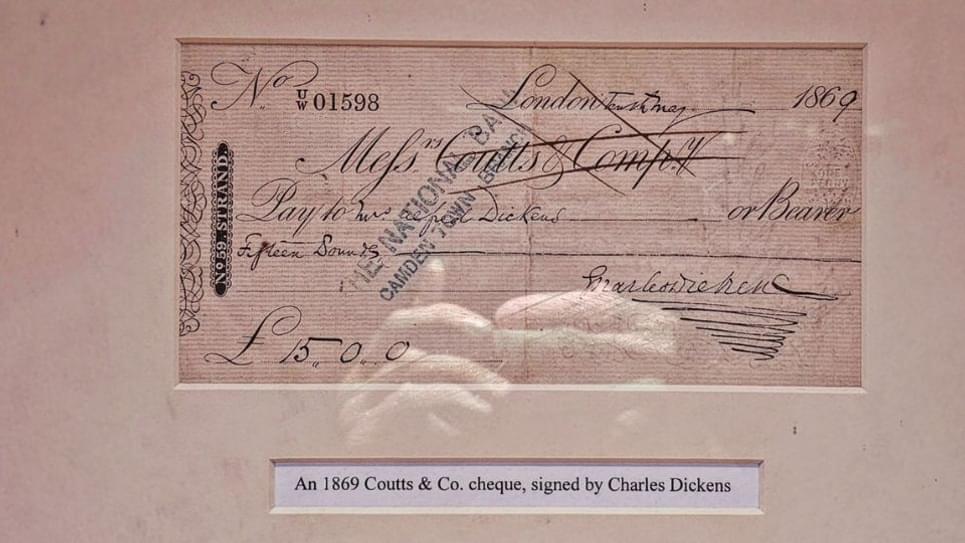
The Angel Hotel features some wonderful nods to Dickens including quotes from the author on mirrors, artwork, copies of his books dotted around the lounge and bar and a cheque signed by Dickens in 1869 to in the foyer.
The Angel's top-selling restaurant dish is "The Pickwick Pie," and many of their cocktails take inspiration from Dickens, including the "Artful Dodger," "Oliver Twist", and "Copperfield". Their Afternoon Tea is themed on Dickens' life and work and has proven to be extremely popular, too.
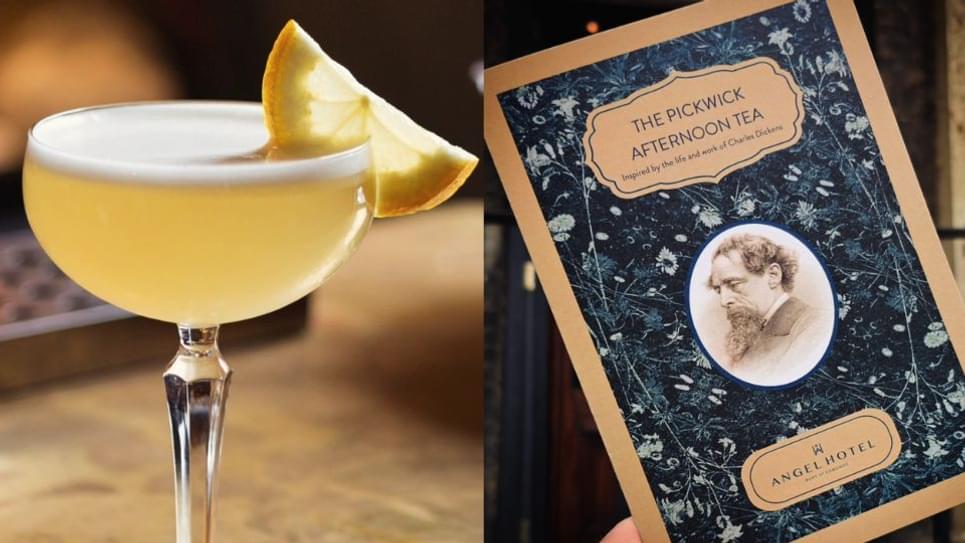
Pickwick Crescent
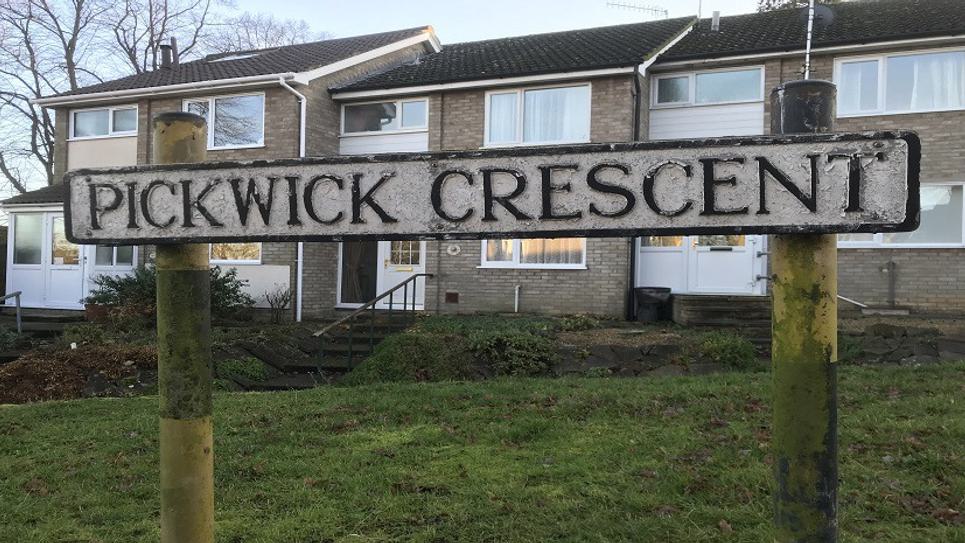
Named after The Pickwick Papers in which Bury St Edmunds features, Pickwick Crescent provides yet another nod to Dickens in the town!
There's so much more to see and do in Bury St Edmunds - check out our guide to Places to Stay and plan your future visit!
Related Posts
Related Blogs

News
Bury Tour Guides to launch…
Bury St Edmunds Tour Guides to Introduce new tours in…

News
Town’s Museum Forms New…
Moyse’s Hall Museum will be forging links with a…

News
St Edmundsbury Cathedral…
St Edmundsbury Cathedral in Bury St Edmunds is…
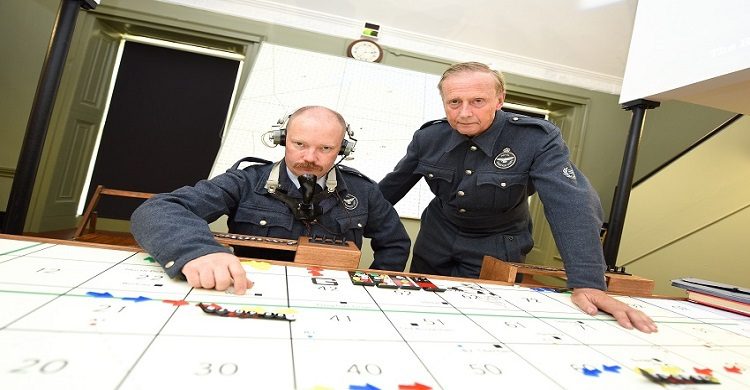
News
Bury St Edmunds & Beyond…
Step inside many of Bury St Edmunds historic buildings…

News
Bury's Best Pubs with a Past
some notable, historic and somewhat quirky pubs and…
Latest news

News
Enjoy a Festive Afternoon Tea in 2025
Celebrate the Christmas season with a festive afternoon tea in Bury St Edmunds & Beyond...

News
Festive Winter Walks
Get outside and enjoy the fresh crisp winter air with one of these walks in Bury St Edmunds and Beyond!

News
Bury Tour Guides to launch new tours next year after successful 2025
Bury St Edmunds Tour Guides to Introduce new tours in 2026 and continue the successful Food and Drink Tours!

News
New in Bury St Edmunds For 2026
A sneak peak into new attractions visitors can enjoy in Bury St Edmunds in 2026.

News
Baby It's Cold Outside... Things To Do When the Weather Turns Frosty
Just because the temperature’s dropped doesn’t mean the fun has to! If you’re visiting town during the chillier months, there’s still plenty to see, do, and experience.

News
Places to sit by a roaring fire in Bury St Edmunds & Beyond
Warm up by a roaring fire this winter in Bury St Edmunds & Beyond...

News
Christmas Park and Walk 2025

News
Festive Theatre Guide 2025

News
Festive Markets in Bury St Edmunds
Festive markets are set to bring seasonal cheer to Bury St Edmunds this November and December, offering the perfect chance to pick up all of your Christmas essentials!
